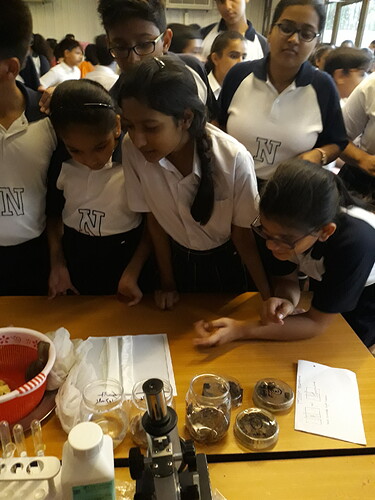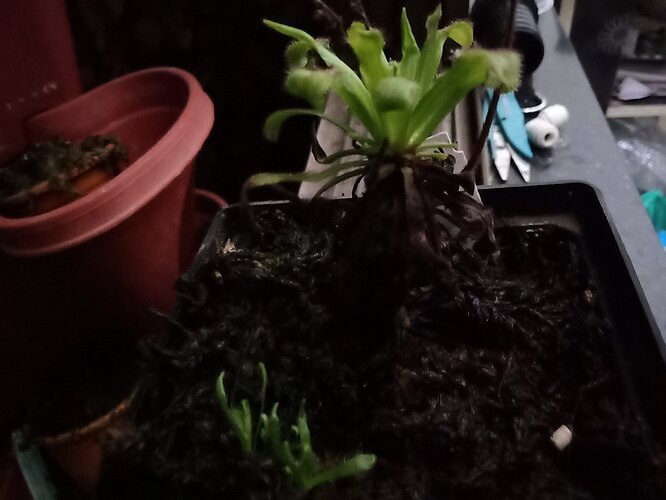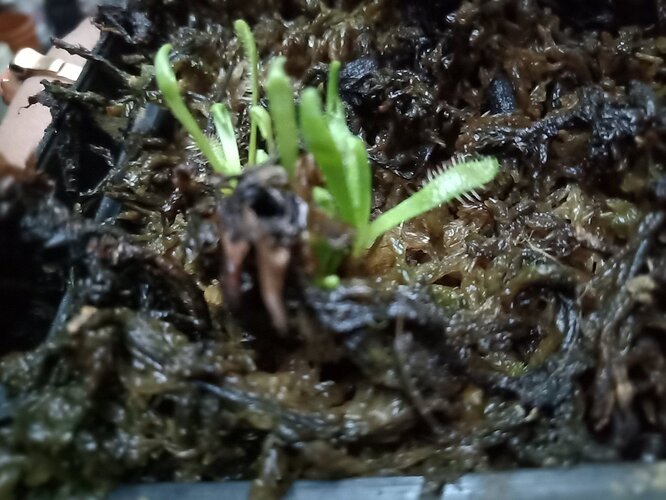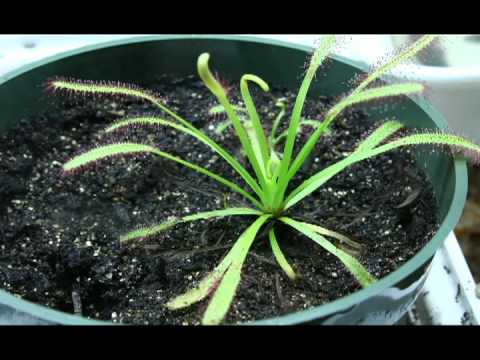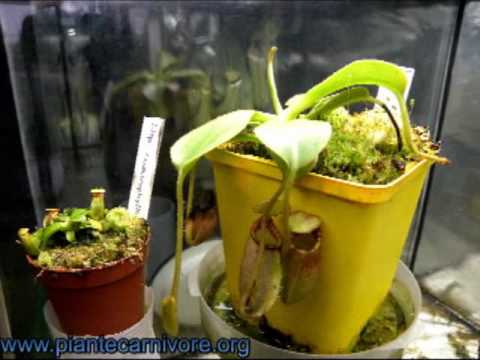Do they cook food during the entire day?
Do bacteria sleep too?
No they don’t cook ![]() food the entire day as photosynthesis happens during day time as it requires sunlight for cooking food
food the entire day as photosynthesis happens during day time as it requires sunlight for cooking food
Bacteria lack a sense of nervous system so they don’t sleep
That is exactly what I said. It can. It is quite astonishing. A ball that looks like dead grass can roll into water and turn into a plant within hours! Chlorophyll and photosynthesis and all.
I don’t know any other plants that do such hibernation apart from that genus - though I believe there are several species in the genus. Not just hibernation, but primitive locomotion as well! Even if it is just being blown around by the breeze.
However, as my post mentioned, there is “hibernation” in the sense of dormancy in quite a few plants. Among those I grow, sarracenias, venus flytraps, several species of drosera and pinguicula hibernate. Most commonly in the form of losing vegetation and forming dormant buds just on or under the soil. Some droseras for tubers. Mosses can dehydrate and return to full function if they find water within reasonable time (which is quite long, can be next year’s monsoon).
These I can speak from direct experience of growing them. Same plants in same pot return to life after looking totally dead or as a small bud for months. But there are plenty others - I mostly grow carnivorous plants only and some vegetables. Some trees shed all their leaves.
Even more plants return as colonies. That exact plant will be dead, but they leave abundant spores and seeds - perrenials are like that. Their life cycle is of a few months and at the end of it, they set abundant seeds, which will grow in the next season - again for a few months. So if you know a location for say… drosera burmanii one year in the monsoon, you can return to it next year in the monsoon and still find them there - though these will be completely new plants from the seeds of those you saw before and there will be no plants there in say… April. None.
Grass is less driven by seasons and more by available moisture, but it works similar. Seeds set and the whole world goes green in monsoon. Come October, we are back to brown till next June.
But this technically can’t be sleep or hibernation, because the plants themselves are different.
All these plants will resume normal growth when their growing season starts.
Where do we find Sphagnum in nature? Can we find native varieties in the forests, say in Maharastr?
Sphagnum is probably not found growing naturally in Maharasthra. It grows in bogs in more temperate and cold climates and in very low nutirent water - often snowmelt. There are some species found in the Himalayan regions, I hear. However, I cannot conclusively speak of this. Growers in the northeast have mentioned in the past that they collect their own sphagnum to cultivate. However, not actually having seen this moss, I can’t say whether this really is sphagnum or another moss that they use in a similar manner.
I purchase all the sphagnum I use and maintain a culture of live sphagnum for plants that need that extra pampering.
There will be native mosses, including forest mosses everywhere. These are not sphagnum. Sphagnum grows on the “ground” that is itself, sort of. Plants grow on top of each other, the lower ones decomposing into peat. Large clumps of sphagnum can even form floating islands of sorts.
The purchased sphagnum is dried sphagnum that is an extremely popular potting medium for orchids and carnivorous plants as well as bedding for reptiles and turtles, etc (more a western hobby).
This sphagnum rarely comes to life, though it can contain spores that germinate if given the right conditions. It still is extremely absorbent and holds enormous utility and economic value. Live sphagnum can be purchased as much smaller and more expensive cultures - usually used as starters for creating a culture. Given good growing conditions and a lot of patience, live sphagnum can also be grown from dried sphagnum moss. From spores as well as a few strands returning to life on occasion - this happens more with loose dry sphagnum than the highly compressed bales (which probably suffer injury in the drying and packing process). Sphagnum can expand dramatically on absorbing water. A compressed sphagnum packet that looks like a small book can fill a small bucket with moist sphagnum when rehydrated.
excellent paper tell us about the dormancy at each levels in perennial plant
A key feature of the perennial life style in plants is the ability to cease meristem activity and to establish a dormant state in which the meristem is rendered insensitive to growth-promoting signals for some time before it is released and can resume growth. The seasonal cycling between growth and dormancy has received little attention despite its importance for perennial behaviour. In this review, we reconsider seasonal cycles of growth and dormancy in view of a new definition of dormancy as a state within the meristem, together with recent exciting developments in the study of perennials, particularly the identification of common signalling intermediates between flowering time and growth cessation in trees.
reference: https://www.researchgate.net/publication/6405103_Plant_dormancy_in_the_perennial_context
I suppose this is another form of “hibernation”. This is a Drosera x Capiciae (capensis x aliciae) regenerating from a stump.
When conditions are not favorable to non-perrenial drosera species, they will often die back to the ground leaving a blackened/rotting stump or nothing (it can rot away completely. But if the roots above the soil are still healthy, the plant will send up new plantlets when favorable growing conditions resume.
This plant suffered from the summer heat and died back. Now that it is monsoon, it has sent up several plantlets. from seeming “nothing” growing. Next to it is a taller plant, that suffered some adversity from the heat, but did not die back completely, merely slowed growth.
Among the pots I brought to the lab when I visited is a Drosera capensis in similar condition that should also regrow similarly if given good conditions.
I just found this pot while potting up a lot of nepenthes seedlings and saw the new plantlets that have come up, so shared. I should probably have some more pots with the dead stumps somewhere. I will try to find them and post what they look like when dormant. But essentially, it is like the black stump in front of these plantlets without any green in sight.
When I get some time, I can separate these plantlets and root them in some sphagnum moss and each of them will become an independent plant. This is one of the ways I create spare plants for sale.
Another way, though off-topic for this thread, is leaf cuttings. A single leaf of this plant, when placed in moist sphagnum or water and given some good light can create a dozen or more small plantlets that will all grow into new plants. Apart from the obvious way of growing them from seed, of course. but vegetative propagation works faster than seed to create mature plant. Cuttings from roots (or regrowth like this) is fastest, followed by plantlets from leaf cuttings. Seeds are the slowest and can take many months or even a year or more to produce a mature plant.
Thanks @bivasnag. Two things we can explore: factors that can induce dormancy, and factors that can end dormancy. How to introduce those factors in an experimental space or in a microenvironment?
We should make and setup a time lapse camera in your garden.
Let us look for organisms that ‘sleep’ without a nervous system?
Hope we are using ‘hibernate’ metaphorically, in the same way as we are using ‘sleep’ in plants. Otherwise the term ‘hibernation’ is also not widely used even among all animals.
Actually, This part is confusing me.
Because according to @Vidyut ,
This makes me believe that the above plant can sleep for a longer duration until water is available hence, the term ‘hibernation’
I have wanted to do this for a while, but the growing area has a structural limitation for photography. The growing area being a balcony dense with plants, anyone clicking pictures has the plants in backlight plus the most spectacular side of the plant facing away from the camera and it isn’t easy to set it up from the front, because it is chock full of plants wanting sun.
Though I have some plans for at least better still photos using a selfie stick…
But there are plenty of time lapses of carnivorous plants on youtube.
Here is one of a drosera capensis (narrow leaf form) growing:
Here’s a nice one of another D. capensis “eating” a fly.
There are many more.
This is a time lapse of a juvenile Nepenthes epiphyta growing (and a tiny precious N. macrophylla photobomber)
Yes it not entirely goes to hibernation but it somewhat go to a similar stage of period which is know as dormancy the above paper I sent also mention about this
in plants is the ability to cease meristem activity and to establish a dormant state in which the meristem is rendered insensitive to growth-promoting signals for some time before it is released and can resume growth. The seasonal cycling between growth and dormancy has received little attention despite its importance for perennial behaviour. In this review, we reconsider seasonal cycles of growth and dormancy in view of a new definition of dormancy as a state within the meristem, together with recent exciting developments in the study of perennials, particularly the identification of common signalling intermediates between flowering time and growth cessation in trees…
This type of behavior you can draw an analogy with that the behavior of that of the animal which undergo hibernation… @Vidyut @Vedikaa
